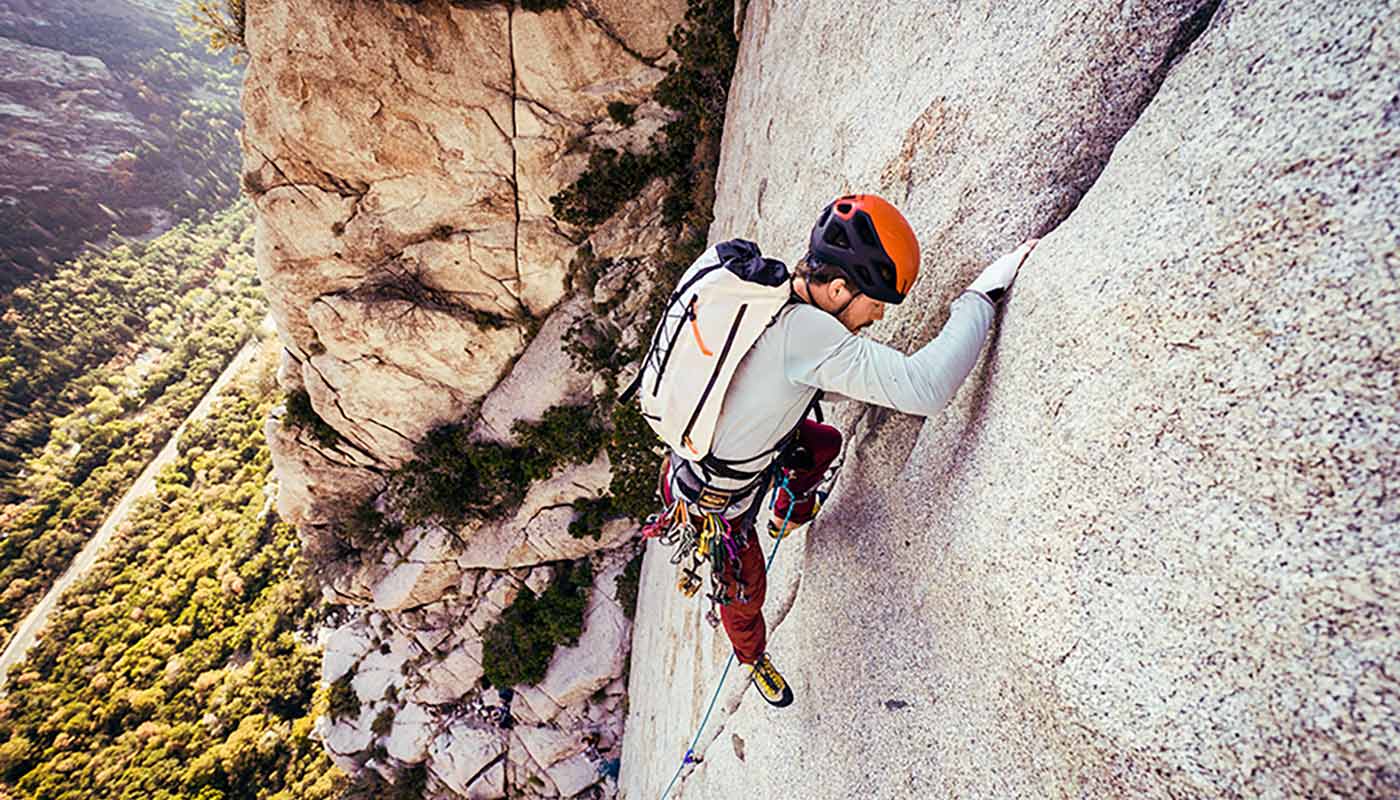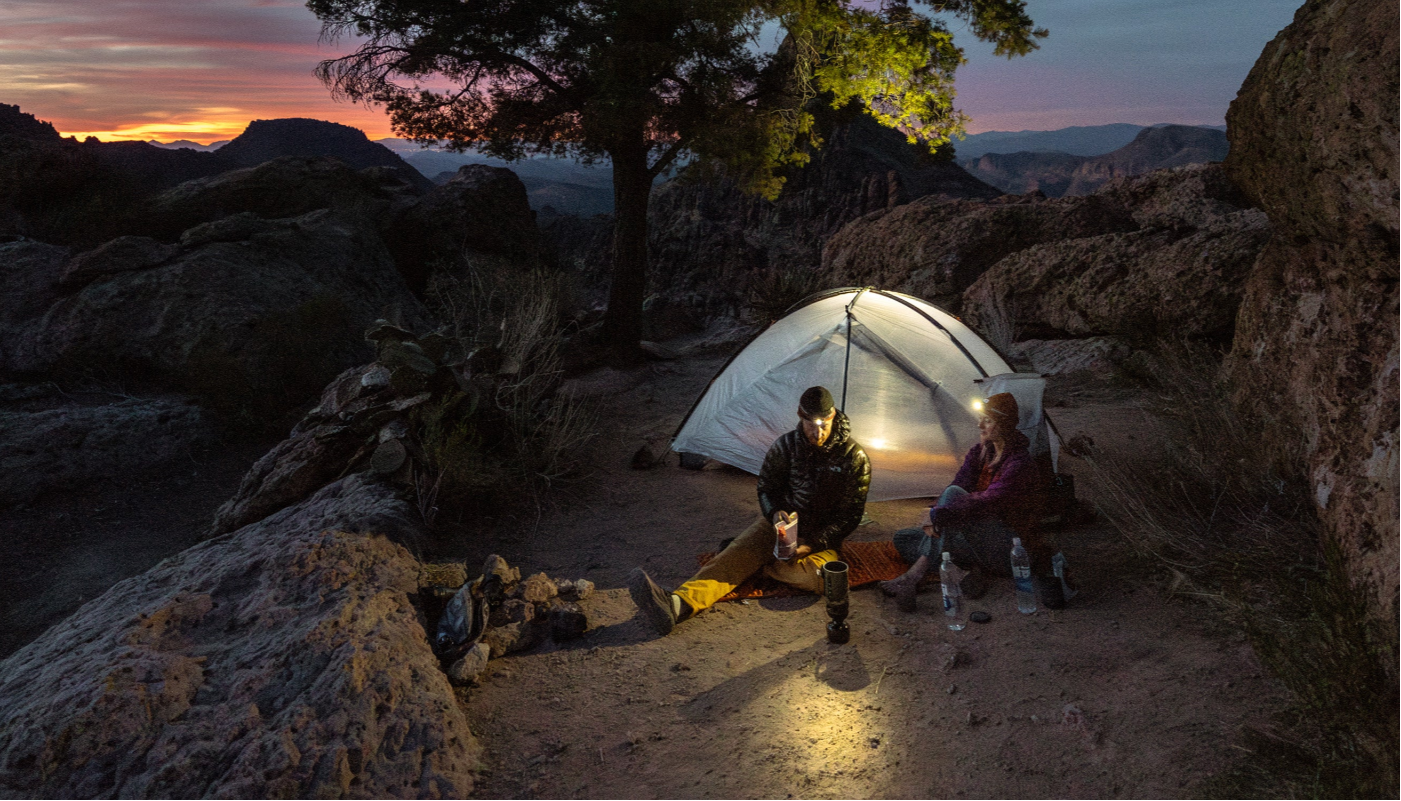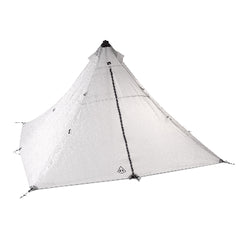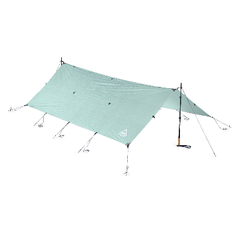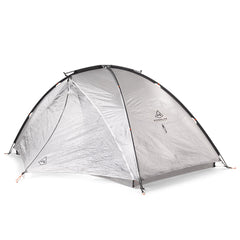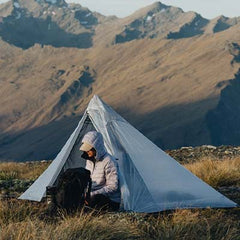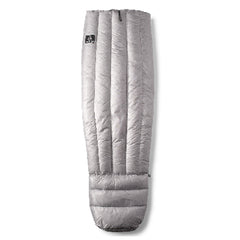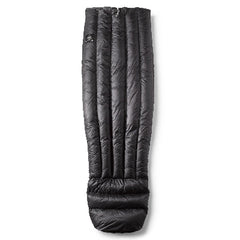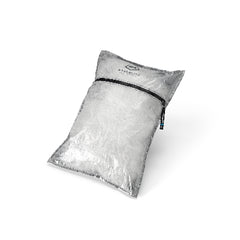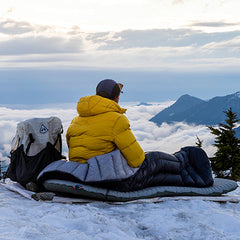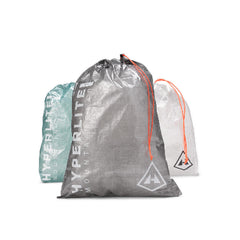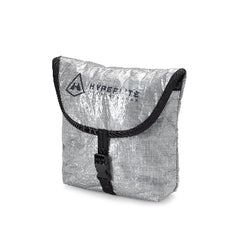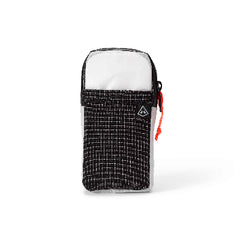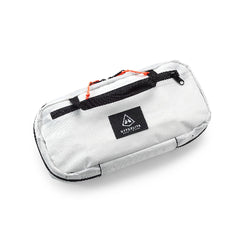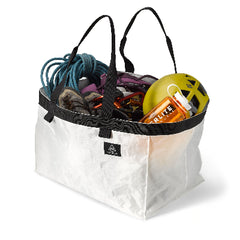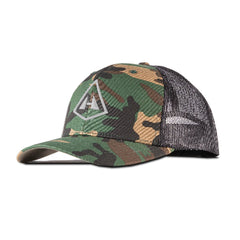Words & photos by Huw Oliver
From the first time I saw one as a child, sleeping bags held a strange kind of fascination for me. I remember asking to sleep in one of my parents’ bags indoors, thinking that somewhere in that tube of squishy warmth, there was a portal to somewhere else, somewhere more exciting than my bedroom. The sense of anticipation and going somewhere extraordinary have stayed with me ever since through hundreds of nights of packing up and sleeping outdoors.

Perhaps it’s the ritual of packing itself that holds some of the attraction: digging out a big backpack, finding space for the bulky sleeping bag, mat, tent, and all the other bits and bobs that needed to be carried to make a home away from home. Stepping gingerly into the straps, testing the weight, and finally hauling myself and the whole assemblage to an upright position, instantly looking forward to an opportunity to put it down again. These days that isn’t the case. Even a winter backpacking trip’s worth of gear fits neatly into my 3400 Porter pack without the knee-breaking weight, but the same old feeling of excitement floods my stomach when I fold away gear that won’t come back out until I’ve arrived at an as-yet-unknown camp spot for the night.

Camping is essentially a means to an end, most of the time. It enables the multi-day journeys that take us to inspiring and uplifting places, although I’m sure that we all enjoy the simplicity of life under canvas for its own sake. 2020 put a damper on more adventurous journeys for obvious reasons. So, my partner Annie and I found ourselves focusing more on the camping itself and found that we didn’t need to go far to feel some of the same magic that I felt when I first climbed inside my mum’s old sleeping bag and pulled the drawstring tight around my face. We’ve all needed our own restorative pockets of sanity to help us navigate through turbulent waters, and for us, it’s been found beneath the fly of a tent and in the bag.

Scotland has enjoyed some spells of arctic weather this winter, bringing unusually cold and settled conditions all across the Highlands. With the cumulative stresses of a crappy year weighing a little heavy, we packed only the essentials—no worries or predictions of gloom—and headed to the northwest Highlands, where monolithic hills stand aloof from each other. It’s a special place at any time of year, but under a blanket of snow and freezing fog, it feels as old as time. It turned out to be just the right time, in fact: while we were traversing a long, snow-covered ridge in Assynt, yet another national lockdown was announced, confining us all once more to our homes.

We didn’t know that as we pitched the tent, though. Instead of the prospect of the weeks and months to come, spread out before us were the oddball summits of the northwest, an edge-place in the corner of the map. Nothing ahead but the Atlantic, all the way to the shores of Newfoundland or Maine. The sun had hidden behind a sheet of cloud for most of the day—we had watched it creep in from the North Sea since from our position on Ben More Assynt we could see the western, northern, and eastern coasts all at the same time since Scotland is no big-hitter in terms of surface area. As it set, the sunlight was released through a crack between cloud and sea, just minutes before it dived into the ocean beyond the Western Isles with a sudden flash of warmth. We’re northerly enough to enjoy long sunsets in winter, and over twenty minutes or so, the burnished gold of sunset gave way to a blood-red, fading to lilac, indigo, and finally to the deep, ultramarine blue of winter twilight.

Camping can be an end in itself, rather than just a means. The forecast was perfect, so we pitched camp a couple of metres from the summit with nowhere better to be and nowhere we would rather go. Life’s problems are clearly denser than air because the higher up you go, the easier it becomes to leave them behind.
As well as a release and a restorative reset, some of our most important learning has come from journeys where camping is the only real objective. When the route itself is flexible, you can experiment with gear and tactics without the risk of a dream route cut short. We’ve taken that to extremes before, testing our UltaMid 2 pitched on snow in storm winds and driving spindrift on one memorably sleepless night with an easy escape route so that we could be comfortable and confident taking it as a lightweight shelter on a more committing journey in Lapland. Other skills, like burying snow anchors and efficiently melting snow, need practice and a non-committing space in which to become comfortable with them before they’re really tested. On this occasion, it was a case of experimenting with a lightweight quilt and warm jacket/trousers combination to see what I could get away with — much easier when the next day promises to be fairly short, in case I was being overly ambitious.

As much as I miss planning and enjoying long days out, these small snatched moments closer to home are just as precious. If you haven’t before, try making a good night’s camping your end goal and give yourself a chance to zone out of whatever’s weighing you down. Some of my favourite spots are so close to home that they would never be a stopover point on a backpacking or bikepacking trip. However, I can be there a couple of hours after finishing work, under a familiar tree or beside a stream, and do nothing but listen to and watch the place. It always makes me feel more ‘me’ in the morning, and right now, that’s something that I can’t get enough of.
Huw Oliver is a Scottish educator, guide, and endurance athlete with the best attitude in the world. He's traveled the far reaches of the globe by bike, foot, and packraft, and has recently relocated to Canada. Read more of his adventures here.
